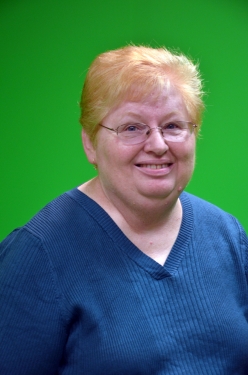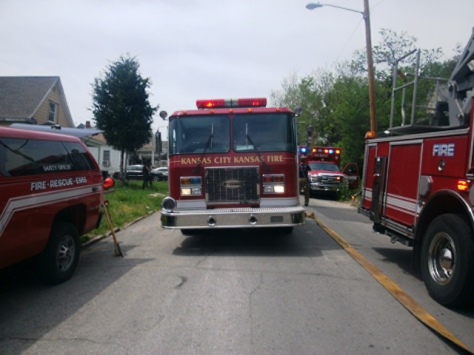March of Dimes, KanCare companies working to improve care rates, especially for Medicaid patients
by Ashley Booker, KHI News Service
Prenatal care educators and state-level Medicaid officials say it’s not an easy task getting and keeping pregnant mothers in their first or second trimester on schedule for care.
There’s a statewide effort to try to change that, in order to reverse a care deficit that can have dire consequences.
“Expectant mothers who begin prenatal care in the third trimester or receive no prenatal care are three times more likely to deliver an infant with low birth weight and their infant is five times more likely to die,” according to a report by the Kansas Department of Health and Environment.
In the report published in March, KDHE examined the adequacy of prenatal care for mothers who delivered 38,488 babies in 2013. There were an estimated 38,805 total live births in the state that year, but information was not available for 317 of them.
The report found that white, non-Hispanic mothers received the highest percentage of more-than-adequate care, while Hispanic and black mothers reported the highest percentage of inadequate care.
The report states the majority of mothers who received inadequate care did so because of late initiation of care.
“If they haven’t presented at the health department for their pregnancy tabs to find out what is available to them, they are kind of flying blind out there,” said Dianne Daldrup, state director of the Greater Kansas Chapter of the March of Dimes. “It’s really getting them in the door initially that seems to be the biggest gap (of women receiving inadequate care).”
Among the 4,383 mothers who said they received inadequate prenatal care, 51.9 percent were Medicaid beneficiaries, 22 percent were on private insurance and 17 percent were self-pay, according to the report.
In Kansas, Medicaid is called KanCare and is administered by three private insurance companies: Amerigroup, United Healthcare and Sunflower State Health Plan. KanCare serves mainly children, Kansans with disabilities and uninsured expectant mothers.
Although more than half of mothers stating they received inadequate care were on KanCare, Aimee Rosenow, a spokeswoman for KDHE, said the program is helping people get the “right care, at the right time, in the right place.” As the program goes into its third year, she said, the numbers should improve.
“As we go further into KanCare implementation, we anticipate an improvement in the timeliness of initiation of prenatal care among women who are KanCare consumers,” Rosenow said via email.
Laura Hopkins, the Kansas president of Amerigroup, said there are many nuances to Medicaid eligibility. Even when a woman goes to the doctor and finds out she’s pregnant and applies for Medicaid, it takes 30 to 45 days to be approved — often the mother may be three to four months pregnant already, Hopkins said.
“That gap in terms of the approval can create a barrier itself in obtaining timely prenatal care,” Hopkins said.
Specialized prenatal care
When it came to receiving adequate prenatal care in 2013, the KDHE report found Hispanic and black mothers reported receiving inadequate care at rates two times higher than white women.
All three KanCare companies say they don’t receive the ethnicity of their members, or analyze their outcomes data based on race or ethnicity. Instead they focus on providing care to all pregnant women, and provide bilingual services no matter a patient’s background.
Daldrup said March of Dimes, a nonprofit dedicated to reducing premature births and infant mortality, is looking at racial and ethnic disparities and where to effectively put efforts and funds so those efforts are best targeted at geographical locations with large disparities in care.
For example, the combined locations of Riley and Geary counties have an army base, she said, where there are a disproportionate number of women coming to Kansas with a spouse or boyfriend. If they get pregnant and aren’t married to someone on Tricare, the military health insurance program, then those women go to Manhattan and Junction City for health services.
“If you look at Riley or Geary County individually, their number isn’t as high as you would want to invest the resources,” Daldrup said. “But because the two of them, they are like one highway exit apart … so that as one cohort group really needs to be addressed together.”
While March of Dimes is helping the community collaborations across the state reach out and target certain populations, she said there are different ways to reach different ethnicities.
For Hispanic women, Daldrup said, it’s essential to get the spouse involved, because the husband provides the “gateway, or the permission for the wife to be able to participate in the program.”
“They can’t even go to classes frequently without having the husband go with them for the first class to see what this is all about,” she said.
Daldrup said effectively reaching out to black women often means going through their church, community organizations or even nail and hair salons.
One fundamental issue is that although education materials can feature Hispanic, black and white faces and are offered in multiple languages, many health providers are white.
“We don’t have a lot of educators or providers that reflect the community that they are trying to serve,” Daldrup said. “That is a fundamental issue — and there is not going to be a short-term solution for that.”
Programs to help
Health care officials in Kansas are implementing programs to reduce pregnancy complication risks, premature delivery and infant diseases that could result from high-risk pregnancies.
Many statewide programs through March of Dimes, as well as the KanCare managed care organizations (MCOs), offer prenatal and postnatal programs, case management, education and incentives for mothers to complete their prenatal visits.
March of Dimes has created a community collaborative model called “Healthy Babies are Worth the Wait,” which brings together key stakeholders that help a woman during her pregnancy, Daldrup said.
By combining the county health department, the local hospital and the obstetrics providers or local federally qualified health centers, she said, the program gets the right people connected so everyone is pointing the pregnant woman in the right direction for care.
March of Dimes also provides prenatal education in a program called “Becoming a Mom.”
Seven established sites use the program, Rosenow said, in Saline, Geary, Crawford, Wyandotte, Reno and Lyon counties, and a shared program in Riley and Pottawatomie counties. A program for Sedgwick County is pending.
Daldrup said her organization is working with KDHE to develop a comprehensive system for the “Becoming a Mom” program, among other things. By the end of 2016, the system will transition to a contractual agreement between KDHE and the University of Kansas, Daldrup said.
“It’s really getting a lot of traction and attention because we are really bringing all the players together to leverage existing services, not to try to bring in new money, since there is none to be had,” Daldrup said.
KanCare MCOs are offering other prenatal programs and initiatives. They include Sunflower State’s “Start Smart for Your Baby,” United Healthcare’s “Baby Blocks” and Amerigroup’s “Taking Care of Baby and Me.”
Miranda Steele, spokeswoman for Sunflower State Health Plan, said the Start Smart program uses case management, education, communication and incentives to give pregnant women prenatal, postpartum and pediatric care.
“Sunflower’s case managers use Start Smart to deliver education and help strengthen communication between the pregnant member and her doctor,” Steele said in an email.
Since KanCare started, Sunflower State has covered more than 4,000 annual deliveries.
Because of the programs and interventions, low birth weight babies, which weigh less than about 5.5 pounds, decreased from a rate of 9.46 percent in 2013 to 8.96 percent in 2014, Steele said via email.
Baby Blocks provides pregnant mothers with scheduling and appointment reminders, health education for each trimester, and overall ways to promote a healthy pregnancy, said Dr. John Esslinger, Medical Director of UnitedHealthcare Community Plan of Kansas.
Once enrolled in the system, United Healthcare reaches out to pregnant women through their cellphones. Esslinger said cell phones are the best form of communication for many members on Medicaid.
Jessica Kostner, a spokeswoman from United Healthcare, said in an email that 1,880 mothers have participated in Baby Blocks, and that the program’s response rate is nearly 40 percent, compared to the United Healthcare national average of 36 percent.
Baby Blocks also provides incentives for mothers to complete prenatal, postpartum and well-child visits, Kostner said. Incentives include items like diaper bags, baby toys and gift cards, among other things.
“We really felt like it’s a great way to keep people engaged,” said Tim Spilker, president of United Healthcare Community Plan of Kansas. “Again, it’s incentives that really tie into healthy behaviors that moms are really looking for.”
Spilker said at the end of last year, United Healthcare created a program in which community health workers, social workers and nurses go into communities to identify high-risk members and make sure they have the resources they need.
The program reaches the top 5 percent of medical care users, which is more than just pregnant mothers, Spilker said.
“They (community health workers) live in the communities, they see folks in the grocery stores and at church; these are real relationships that we are creating in the community, and that’s really critical in terms of really creating change,” Spilker said.
Health of babies
“Across the board, everybody’s interest is in saving babies lives, but also trying to get these kids to full-term, healthy delivery,” Daldrup said.
Preterm babies are called “million dollar” babies for a reason, Daldrup said, because their births cost ten times more than full-term babies.
Many preterm babies will become healthy productive adults, she said, but others will have learning disabilities and health complications throughout their lifetimes.
Staying at least 39 weeks in the womb allows babies to be healthier, weigh more and develop their heart and lungs, among other organs, she said.
Smoking is another issue that affects the baby’s overall health. When women smoke during their pregnancy, their babies often are low in birth weight, are delivered preterm and have many health issues, including breathing problems.
“It’s not enough to get mom to quit smoking during pregnancy,” Daldrup said. “They need to stay quit, and they need their spouse or whoever they are living with to stop smoking as well, because it really has a huge impact on these kids.”
The Healthy People 2020 initiative has set a national goal of increasing the percentage of pregnant women who initiate prenatal care in their first trimester from 70.8 percent in 2007 to 77.9 percent in 2020, according to the KDHE report.
While Kansas surpassed that goal by reaching 79.4 percent in 2013, Rosenow said there’s always room for improvement.
“We wish that we could have 100 percent of our babies born healthy and our mothers healthy, but until we reach that goal we have a lot of work to do,” she said. “We know that every life is significant.”
The nonprofit KHI News Service is an editorially independent initiative of the Kansas Health Institute and a partner in the Heartland Health Monitor reporting collaboration. All stories and photos may be republished at no cost with proper attribution and a link back to KHI.org when a story is reposted online.
– See more at http://www.khi.org/news/article/large-racial-ethnic-disparities-in-kansas-prenatal-care#sthash.31Dkk4ET.dpuf









